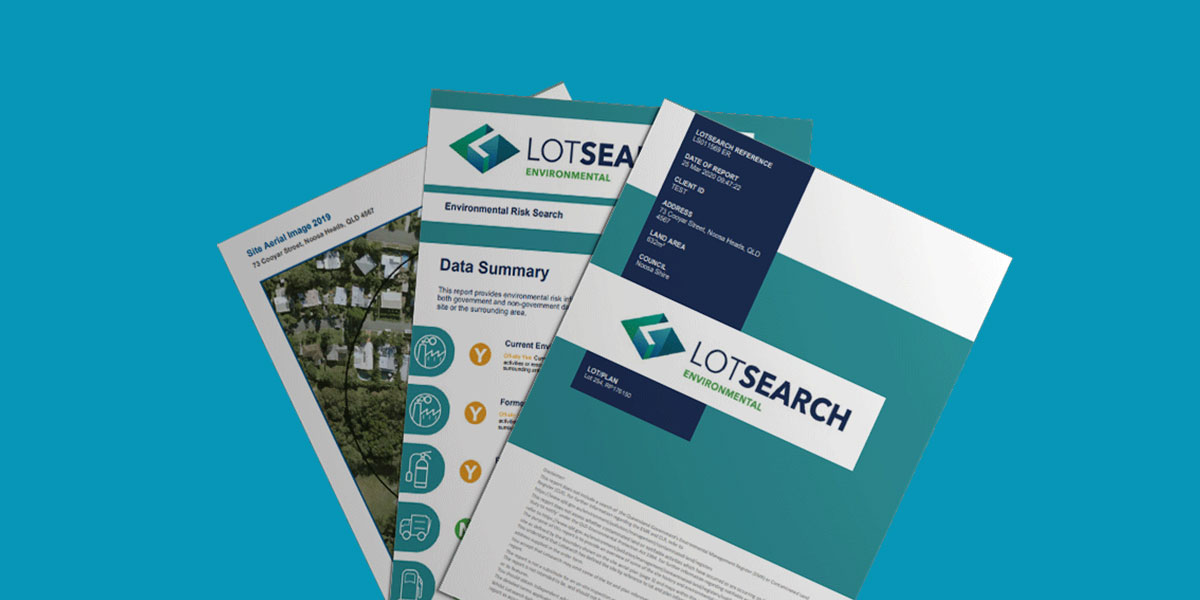
On 18 July 2023, Lotsearch presented at InfoTrack’s Webinar on Understanding the hazards: contaminated land – changing legislation & due diligence. It was a great session that explored some of the key issues in contamination risk management, including what buyers and sellers can do to manage risk in transactions. This article recaps some key themes from the session.
Liability for contamination
Contamination is a major potential risk to human health and the environment. But it also represents a critical legal and financial risk.
Two key legal risks are:
- That a property may be served with a statutory notice from an environmental regulator requiring that a site must be investigated, managed, or remediated (cleaned up). The costs of compliance with notices can be significant. Importantly, whilst the “polluter pays” principle is included in the laws of all Australia’s jurisdictions, the environmental regulators often have powers to issue statutory notices to people (and corporations) who were not the original polluter. This gives rise to the prospect that an “innocent” person who was not responsible for causing or contributing to the contamination, might be served with a notice. All jurisdictions are different and have different provisions about the circumstances in which a notice can be issued and the potential parties to whom a notice can be issued. In Victoria, potentially “innocent” parties to whom a statutory notice can be addressed include owners and occupiers. In New South Wales, responsibility for contamination can include owners and occupiers. In Queensland, the parties to whom a notice can be issued include an occupier.
- Separately to the risk of the regulator taking action, if there is contamination present at a site, that has migrated or could migrate offsite, there is an additional risk that a site owner or occupier might become be the subject of a legal proceeding to recover damages from them (for example, if migrating contamination were to cause property damage to a neighbouring property or harm to a person).
With this in mind, those involved in property and corporate transactions need to understand the risks associated with potential (or actual) contamination at a site and the legal and practical implications of contamination.
Key trend: Vendor disclosure
Whilst buyers should undertake due diligence with respect to environmental matters, there is a growing trend in Australia towards mandating vendor disclosure of contamination issues. In addition to all other considerations for property professionals, it is noteworthy that both Victoria and Queensland have particular rules about provision of contamination information by vendors. In Victoria, this also extends to Lessor disclosure to lessees.
In summary:
- In Victoria, under section 39 of the Environment Protection Act 2017, which commenced on 1 July 2021, there is a new duty to manage contaminated land. This requires that a person in management or control of contaminated land must minimise risks of harm to human health and the environment from the contaminated land so far as reasonably practicable. Part of compliance with the duty is the obligation to provide adequate information to enable any person who is reasonably expected to become a person in management or control of the contaminated land (such as a new owner or new lessee) to comply with the duty to manage contaminated land. There is also an obligation to provide adequate information to any person that the person in management or control of the contaminated land reasonably believes may be affected by the contamination.
- In Queensland, under section 408 of the Environmental Protection Act 1994, a landowner must, before agreeing to sell or dispose of land listed on the Environmental Management Register (EMR) or Contaminated Land Register (CLR), give written notice to the buyer. The notice must inform the buyer that the land is recorded on the EMR or CLR and provide details of any site management plan (SMP) for the land where applicable. A landowner also has the obligation to give the buyer written notice should land be the subject of:
- A show cause notice
- An environmental evaluation requiring a site investigation to be conducted
- A notice requiring a SMP to be prepared or advising that a SMP has been prepared for the land
- A clean-up notice
- An order under s.458 of the Environmental Protection Act 1994.
The importance of purchaser due diligence
Environmental due diligence on contamination hazards is critical for prospective purchasers. This is particularly the case as urban growth in many of Australia’s larger cities is encroaching into areas which were historically occupied by commercial or industrial premises that may have caused historic contamination.
Lotsearch provides a range of search tools to assist you with your due diligence. The following products are available via InfoTrack:
- Lotsearch Environmental Risk - Contaminated Land Search
- Lotsearch Contaminated Land Screening Report
Disclaimer
Lotsearch Pty Ltd is a national search provider and expert in spatial intelligence and risk mapping. The information in this article provides a summary and general overview on matters of interest. It is not intended to be comprehensive nor does it constitute legal advice. You should always seek independent legal or other professional advice on specific cases and before acting or relying on any of the content. Whilst attempts have been made to ensure that the content is current, Lotsearch Pty Ltd does not guarantee its currency.
If you have any legal questions about contamination, please reach out to Gabrielle Guthrie from Guthrie Legal. Gabrielle was a presenter at the InfoTrack’s Webinar on Understanding the hazards from contaminated land. Gabrielle is an independent environment and planning lawyer.



